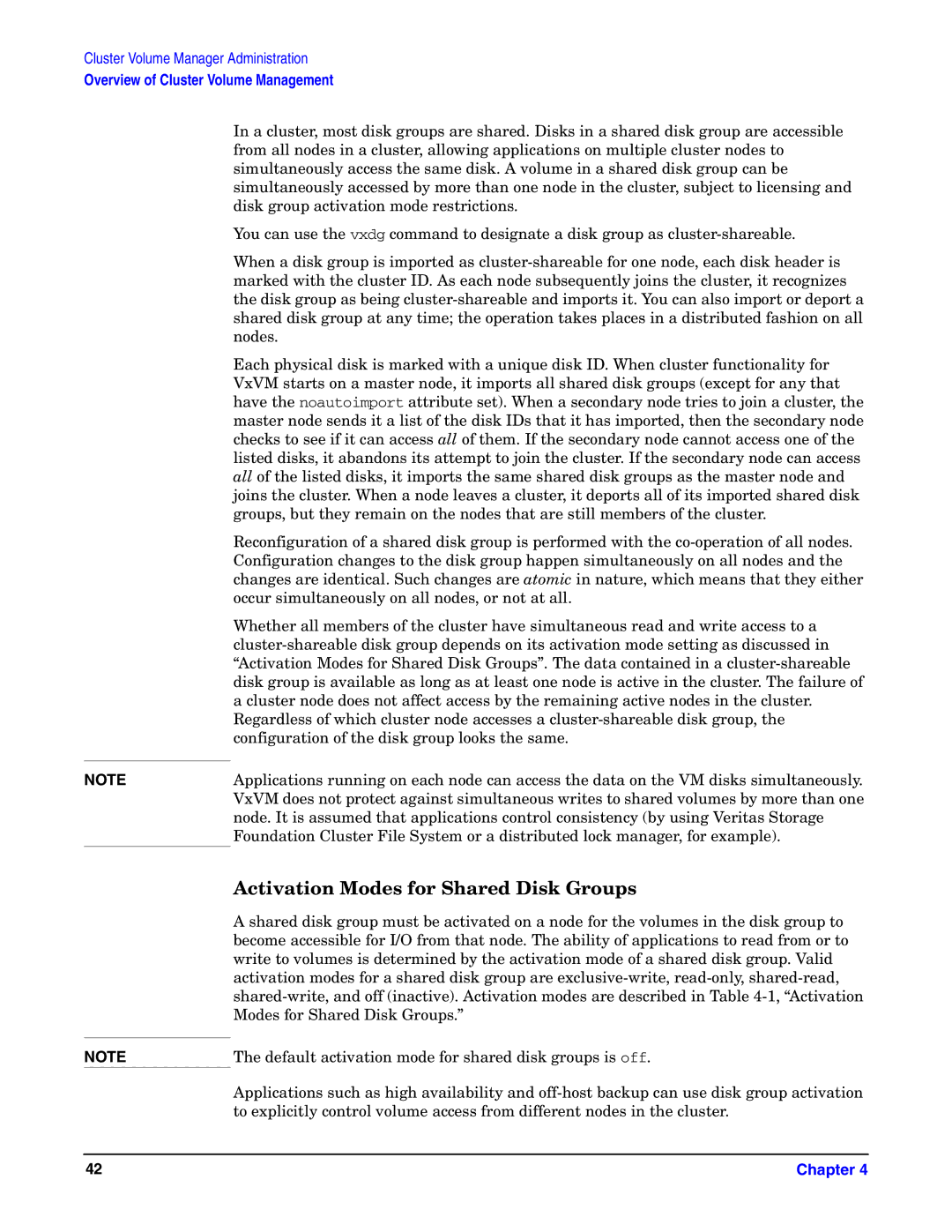
Cluster Volume Manager Administration
Overview of Cluster Volume Management
| In a cluster, most disk groups are shared. Disks in a shared disk group are accessible |
| from all nodes in a cluster, allowing applications on multiple cluster nodes to |
| simultaneously access the same disk. A volume in a shared disk group can be |
| simultaneously accessed by more than one node in the cluster, subject to licensing and |
| disk group activation mode restrictions. |
| You can use the vxdg command to designate a disk group as |
| When a disk group is imported as |
| marked with the cluster ID. As each node subsequently joins the cluster, it recognizes |
| the disk group as being |
| shared disk group at any time; the operation takes places in a distributed fashion on all |
| nodes. |
| Each physical disk is marked with a unique disk ID. When cluster functionality for |
| VxVM starts on a master node, it imports all shared disk groups (except for any that |
| have the noautoimport attribute set). When a secondary node tries to join a cluster, the |
| master node sends it a list of the disk IDs that it has imported, then the secondary node |
| checks to see if it can access all of them. If the secondary node cannot access one of the |
| listed disks, it abandons its attempt to join the cluster. If the secondary node can access |
| all of the listed disks, it imports the same shared disk groups as the master node and |
| joins the cluster. When a node leaves a cluster, it deports all of its imported shared disk |
| groups, but they remain on the nodes that are still members of the cluster. |
| Reconfiguration of a shared disk group is performed with the |
| Configuration changes to the disk group happen simultaneously on all nodes and the |
| changes are identical. Such changes are atomic in nature, which means that they either |
| occur simultaneously on all nodes, or not at all. |
| Whether all members of the cluster have simultaneous read and write access to a |
| |
| “Activation Modes for Shared Disk Groups”. The data contained in a |
| disk group is available as long as at least one node is active in the cluster. The failure of |
| a cluster node does not affect access by the remaining active nodes in the cluster. |
| Regardless of which cluster node accesses a |
| configuration of the disk group looks the same. |
|
|
NOTE | Applications running on each node can access the data on the VM disks simultaneously. |
| VxVM does not protect against simultaneous writes to shared volumes by more than one |
| node. It is assumed that applications control consistency (by using Veritas Storage |
| Foundation Cluster File System or a distributed lock manager, for example). |
NOTE
Activation Modes for Shared Disk Groups
A shared disk group must be activated on a node for the volumes in the disk group to become accessible for I/O from that node. The ability of applications to read from or to write to volumes is determined by the activation mode of a shared disk group. Valid activation modes for a shared disk group are
The default activation mode for shared disk groups is off.
Applications such as high availability and
42 | Chapter 4 |
